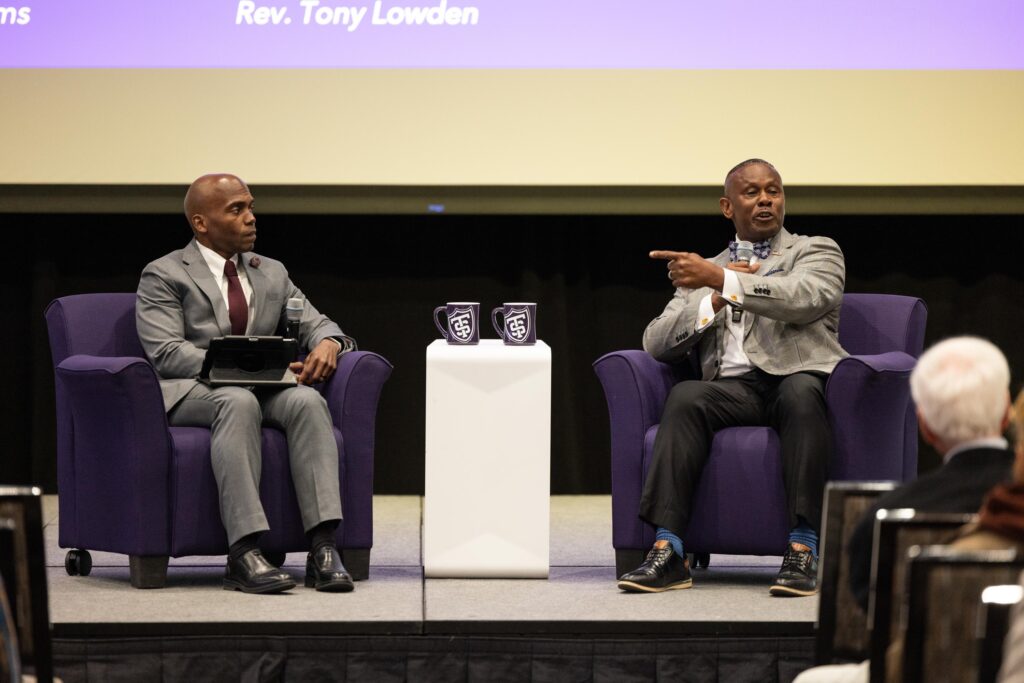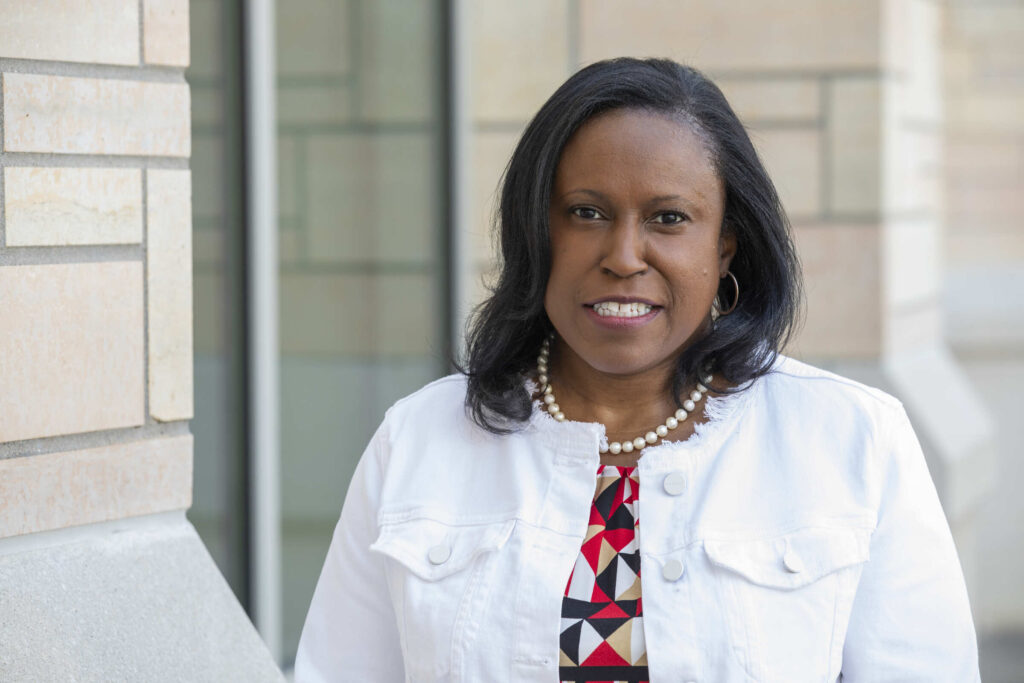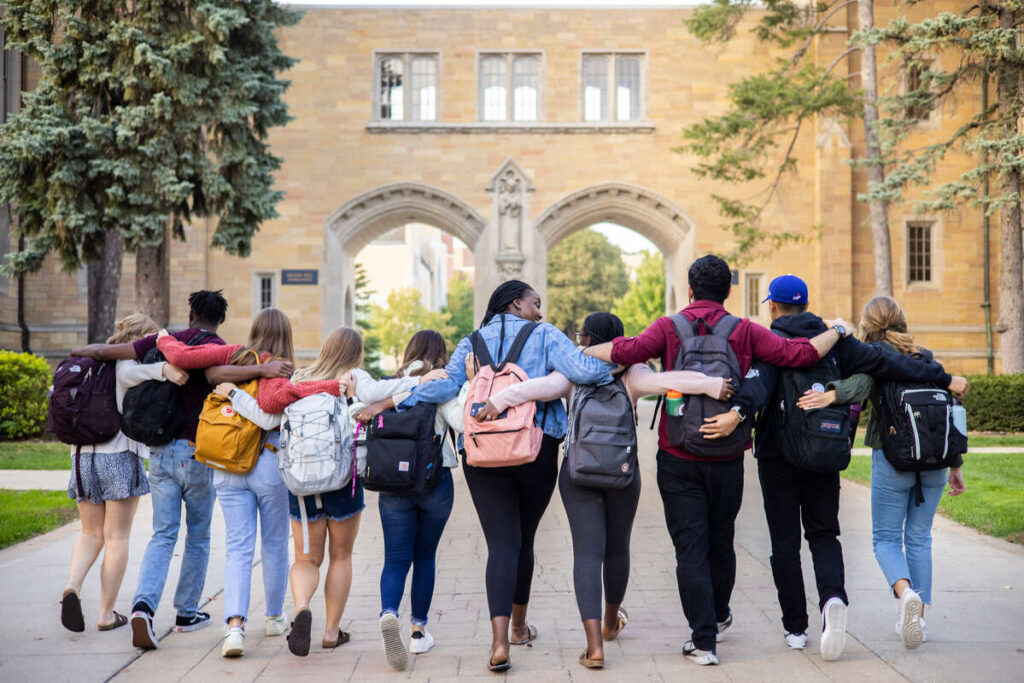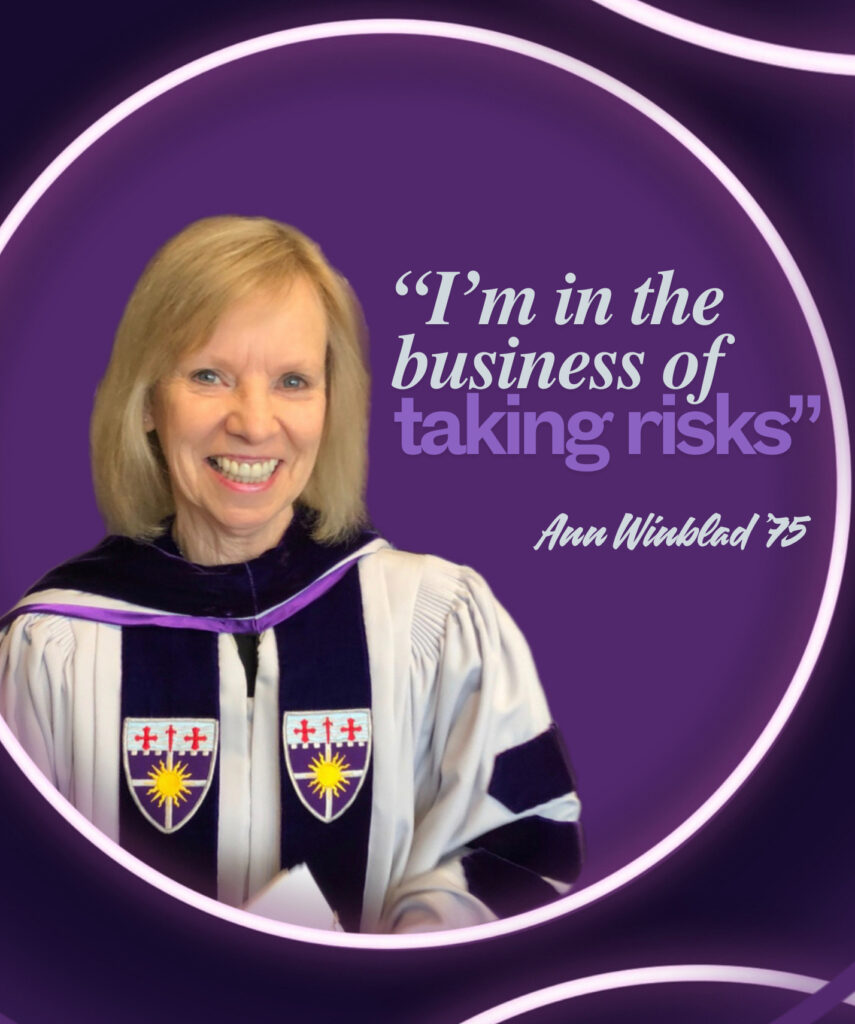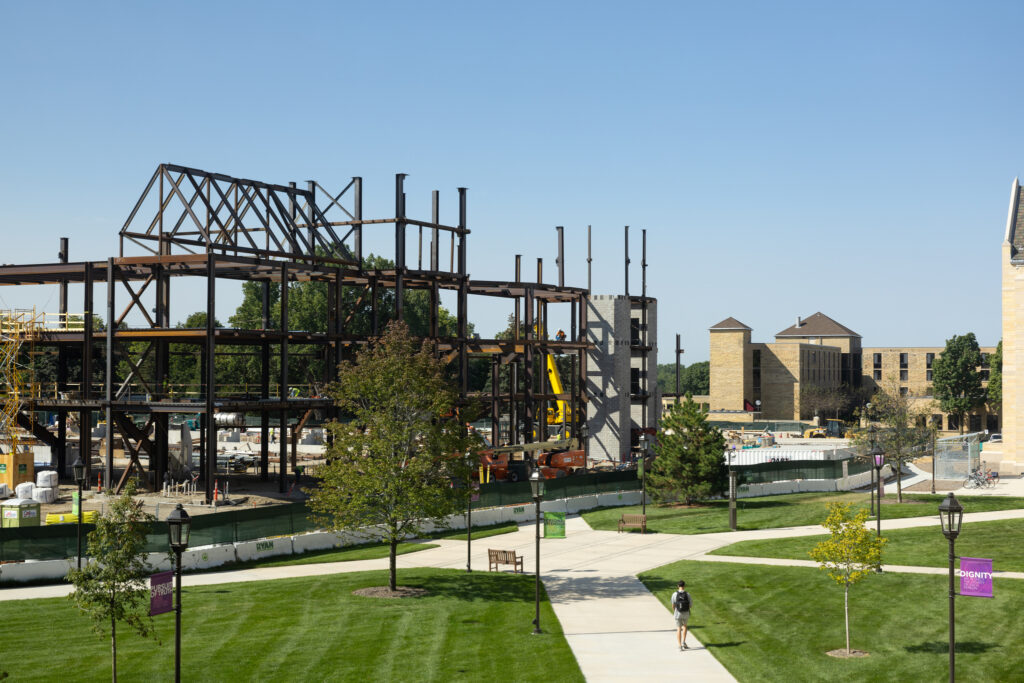For thousands of Tommies, St. Thomas isn’t just a university, it’s home. The university is working in new ways to ensure that home feels welcoming, supportive and inclusive for all, including members of the LGBTQIA+ community.
As LGBT History Month begins, the St. Thomas community is highlighting ongoing inclusion efforts to support the LGBTQIA+ community in learning, living, work, play and growth at St. Thomas.
“St. Thomas values the different backgrounds that contribute to a more vibrant and diverse community,” said Kha Yang, associate vice president for inclusive excellence who also heads the Office for Diversity, Equity and Inclusion. “We are committed to fostering a culture of inclusion and belonging for all. Across campus, we continue to carve space to hear the voices of our LGBTQIA+ community, and through this community feedback, we are better informed to provide authentic, meaningful support.”
Hugh Smeltekop is one of those voices. At St. Thomas, he’s part of the more than 13% of students and 9% of faculty and staff who self-identify as LGBTQ+, according to responses from the most recent campus climate survey.
An officer in the LGBTQIA+ Faculty and Staff Association and assistant director of the STEM Inclusive Excellence program, Smeltekop is also part of the campuswide inclusion efforts, knowing firsthand how important and nuanced creating an inclusive culture can be.
“There's not a magical worksheet where you can check off the things you do and all of a sudden, all of the queer students feel comfortable and loved and accepted,” Smeltekop explained. “It's a process, and it brings me lots of joy to see young people embracing that part of themselves and finding support so much earlier in so many situations, than in my day. Things are changing.”
Strengthening 'Qmmunity'
The median age Americans who identify as LGBT first tell a friend or family member about their sexual orientation or gender identity is 20, according to a study by the Pew Research Center. That means, for the traditional undergraduate student, college is a pivotal window.
Vern Klobassa, director of student development, said St. Thomas is committed to providing safe spaces for identity development and expression.
“Given the nature of LGBTQIA+ identities and hearing from students that it can be difficult to meet others who share their identities and experiences on campus, it is important for us to create opportunities for our queer and trans students to meet other students who are members of the community,” Klobassa said, citing the Queer Straight Alliance and Center for Well-Being group counseling.
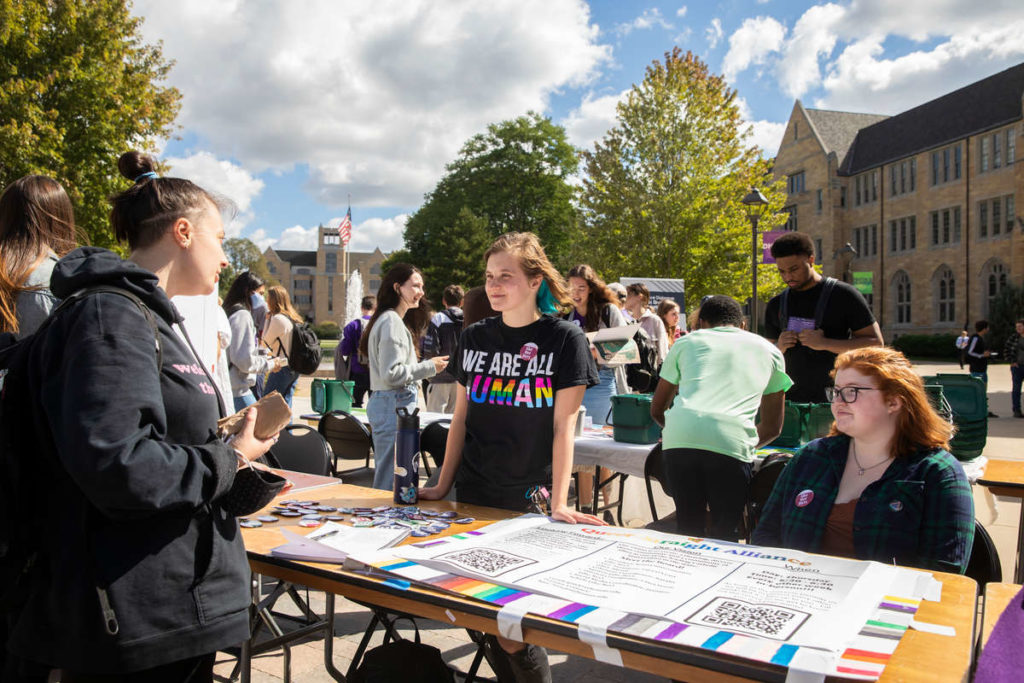
A clever word combination of queer and community, Qmmunity Drop In is one place members of St. Thomas’ LGBTQIA+ community find one another and discuss wellness, resources and events. Qmmunity and the LGBTQIA+ Interpersonal Process Group are both facilitated by licensed psychologists from the Center for Well-Being.
“We want to make sure everyone feels like they belong, that everyone is able to thrive, not just survive through tough classes and the normal developmental challenges of going through college,” explained Alex Hernandez-Siegel, director of Student Diversity and Inclusion Services. “We’re sending a message that we're not only here to help you learn and grow, but also care for you.”
Among the groups tasked with facilitating support for the LGBTQIA+ population is the Lavender Working Group. Officially convened last fall, the group includes LGBTQIA+ staff, faculty and student voices and some that fall into more than one of those categories.
“To strengthen our community, we need to do this from different angles,” Hernandez-Siegel, who is member of the Lavender Working Group, explained. “We’re trying to think broadly, collaborate.”
The Lavender Graduation is a result of that collaboration. Last spring, St. Thomas added a celebration for graduating LGBTQIA+ students to its roster of smaller, affinity group celebrations that surround commencement. A dinner and awards for leadership in the LGBTQIA+ community was capped off with the presentation of a lavender stole. The stole’s purple color represents and honors students’ identities as Tommies and as members of the LGBTQIA+ community.
“When the university invests in these programs, it's not about investing in the programs, it's about the experience and sending a message about where we've been in our history, where we are and how we're continuing to build,” Hernandez-Siegel said.
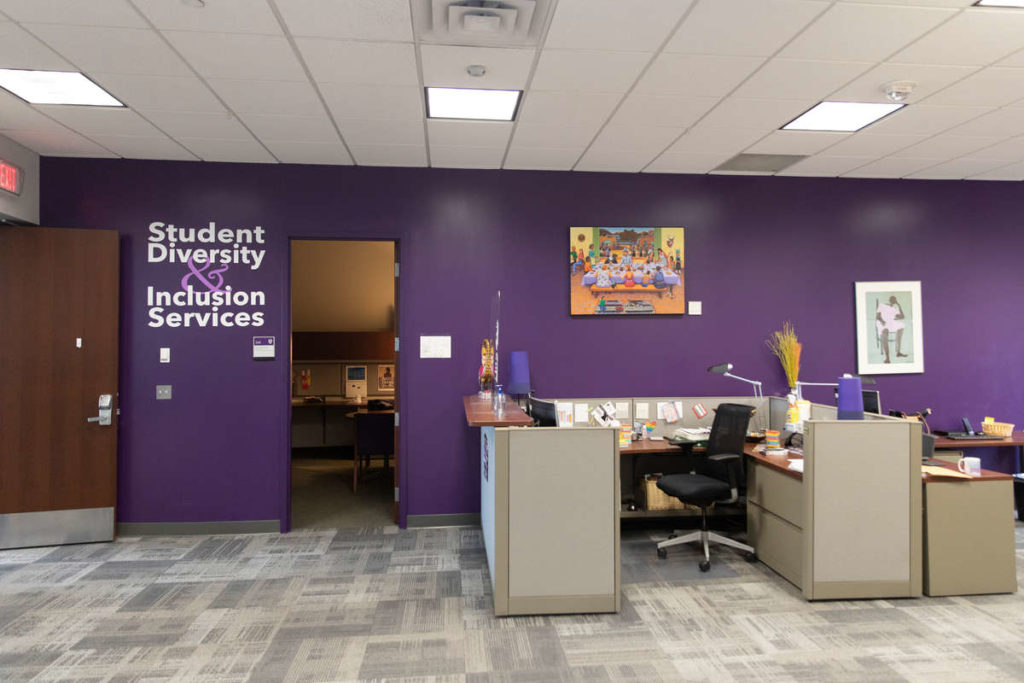
A visible commitment to inclusion
On the St. Paul campus, some changes are happening in real time. The university launched a new online hub to support the LGBTQIA+ community as they make St. Thomas home.
This site catalogs the ways classrooms, residence halls, health and wellness offerings, programming and more has the LGBTQIA+ community in mind. It is a collective effort showcasing St. Thomas’ commitment to inclusion across campus, Yang said.
In Dowling and Brady residence halls, construction crews are adding single-user restrooms and lockable private shower stalls and changing rooms among other updates – changes St. Thomas has made to existing residence halls and includes in all new construction to make home feel more comfortable.
In the classroom, the university is working to standardize practices that improve the learning climate for all students and provide training and education around LGBTQIA+ identities. Smeltekop said among other efforts, faculty are sharing their pronouns and making an inclusive verbal or syllabus statement, which can make a powerful impact on student success.
Also foundational to inclusion is representation. While there is a community of LGBTQIA+ students, faculty and staff, it’s not always visibly apparent. Donning a head of purple hair, Smeltekop said he wants LGBTQIA+ students to know they’re of a community.
“It’s a way to queer my personality and my appearance on campus so that when students see me, they might assume that I have a gay or queer identity, but they also know that it's OK to be different and it's OK to express yourself,” Smeltekop said. “It’s just one of the staples of student development research, when you see people that look like you on a campus, you feel inherently more welcome, and an important piece of how we approach our work as faculty and staff at St. Thomas.”
Guided by faith and mission
Much went into helping Smeltekop embrace his entire identity, and he still sees members of the LGBTQIA+ community challenged with similar experiences.
“When I went to college, I had been trained for 18 years by my culture to believe that I was bad,” Smeltekop said. “Obviously some great interactions are not going to completely undo all of that internalized homophobia, but this is worth doing. It’s a process, and we can be part of that process of students understanding who they are.”

St. Thomas’ Catholic identity is the force behind the work to support and foster belonging for LGBTQIA+ community members, Yang said.
“Human dignity is a right not a choice,” Yang said. “Our mission and convictions call on us to support the inherent worth and human dignity of all and create a welcoming environment that is respectful and inclusive.”
Remembering the emotion of the first Lavender Graduation, Hernandez-Siegel said he sees creating a real home at St. Thomas for all as a way to live out the university’s common good mission, empowering marginalized communities who need the support.
“We often say faith should be visible in our works,” Hernandez-Siegel said. “In all the work that we do, there's room for more as we give students the support they need to find what the common good looks like for them.”

